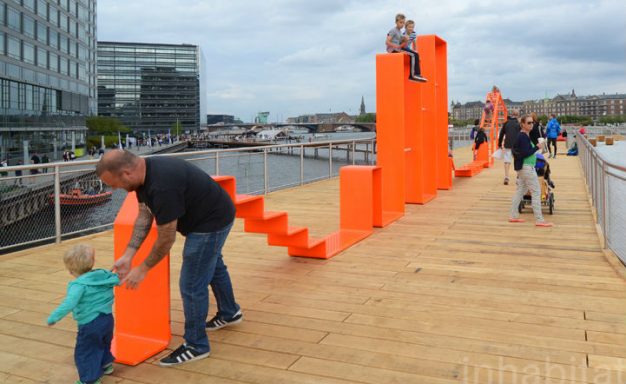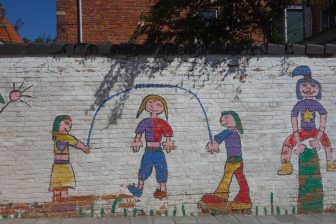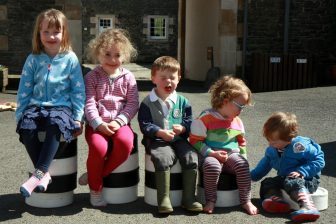
Incorporating play into pedestrian walkways
When it comes to designing narrow public spaces such as street sidewalks, pedestrian bridges and pathways in general, designers are often forced by the functional and spatial constraints to discard play as a priority. However, there are innovative examples within various urban design projects worldwide. Some of these demonstrate how to create brisk and attractive public spaces for everyone by adding playability to the design of pedestrian pathways.
The playability of a street
“If cities are not meant for children they are not meant for citizens either. If they are not meant for citizens – ourselves – they are not cities.” – Aldo Van Eyck
A playground doesn’t necessarily mean a fenced space of a certain surface area. It can be a construction that co-exists alongside the common street equipment such as benches, lampposts and water fountains in even the narrowest of pedestrianised public spaces.
The linear ribbon-like playground that was being installed on one of the curvy promenades in the Kalvebod Brygge waterfront park, in Copenhagen, is an excellent example of how brilliant design ideas can manage to facilitate multiple uses of public space.
Multipurpose design
The playground designed by the JDS Architects and KLAR Architects uses the minimum space possible on the path. without detracting the quality of its function as a play area. Its multipurpose design concept manages to incorporate:
1. familiar shapes (the house-like outline),
2. colourfulness (bold red colour),
3. regular playground equipment (the monkey bars),
4. non-slip floor (the tactile flooring surface),
5. resting areas (bench-like linear structure) and so on.
Therefore, besides walking on this fascinating waterfront path, the installation inspires swirling, jumping, climbing or in the end – for the less active – just resting!
Nowadays, considering that a great number of children are growing up in densely built cities, it is important to incorporate play provision and play affordance within the urban context. The city of Copenhagen offers a wide range of urban design projects that identify play as a priority. In general, such projects tend to increase the walkability and liveability of the city for everyone.
Copenhagen ranked as the #1 Most Liveable City for 2013 and 2014 according to the Monocle Magazine’s Annual Quality of Life Survey.
Author: Maria Sitzoglou
Photo: by inhabitat.com. All rights reserved.



